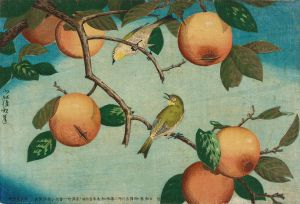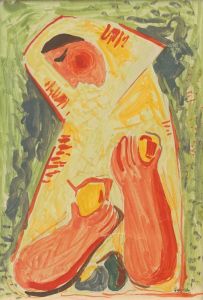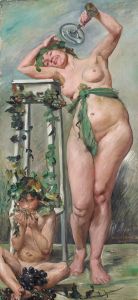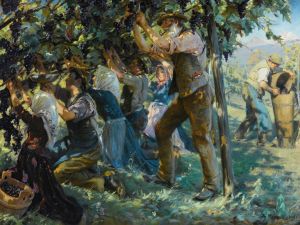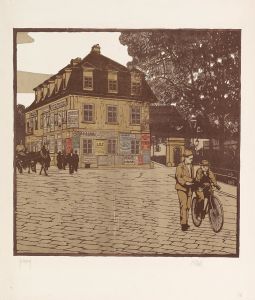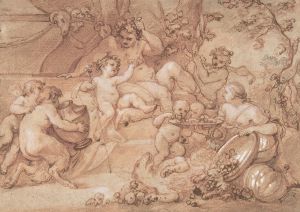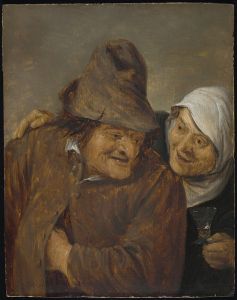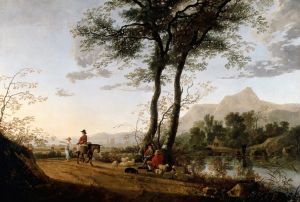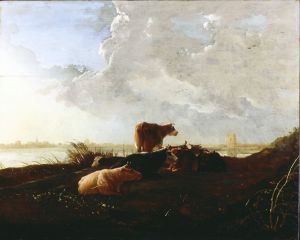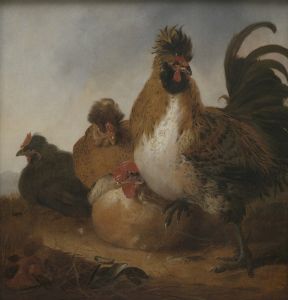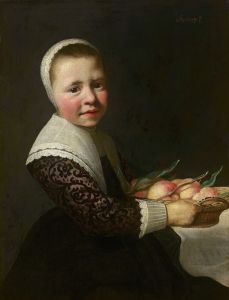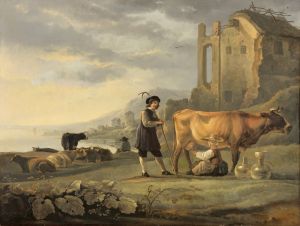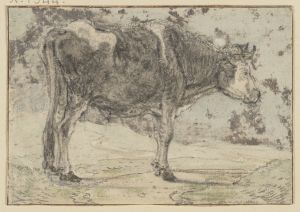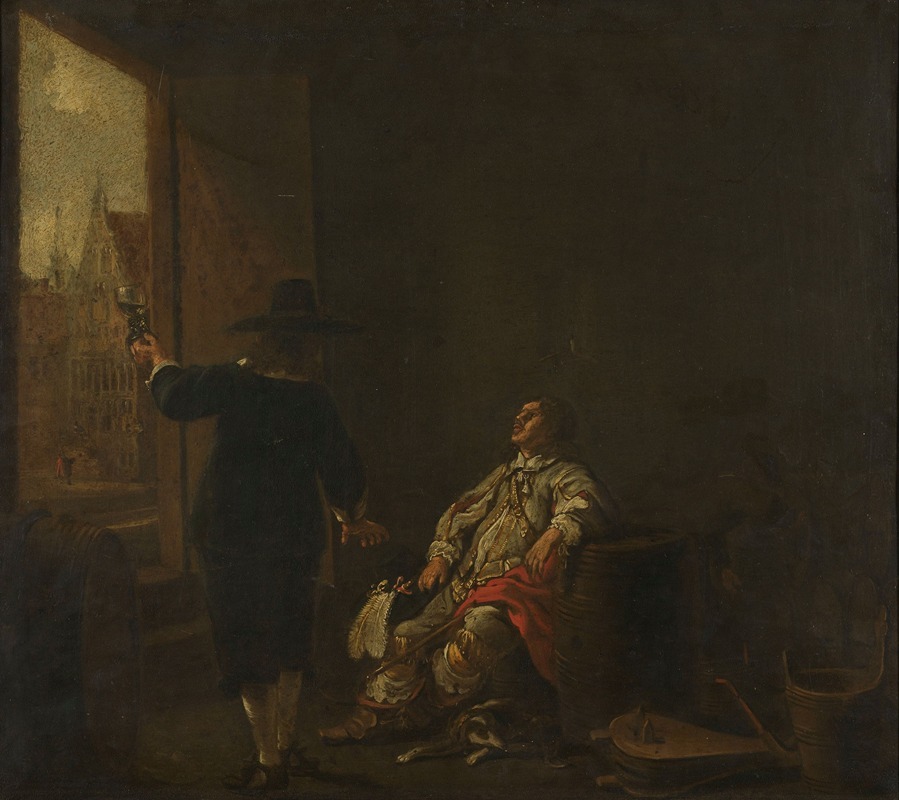
Tasting the Wine
A hand-painted replica of Aelbert Cuyp’s masterpiece Tasting the Wine, meticulously crafted by professional artists to capture the true essence of the original. Each piece is created with museum-quality canvas and rare mineral pigments, carefully painted by experienced artists with delicate brushstrokes and rich, layered colors to perfectly recreate the texture of the original artwork. Unlike machine-printed reproductions, this hand-painted version brings the painting to life, infused with the artist’s emotions and skill in every stroke. Whether for personal collection or home decoration, it instantly elevates the artistic atmosphere of any space.
Aelbert Cuyp was a prominent Dutch landscape painter of the 17th century, known for his idyllic and atmospheric depictions of the Dutch countryside. However, his oeuvre also includes a variety of other subjects, including portraits, still lifes, and genre scenes. One of his lesser-known works is "Tasting the Wine," which exemplifies his ability to capture everyday life with a sense of warmth and realism.
"Tasting the Wine" is a genre painting, a category of art that depicts scenes from everyday life. This particular work illustrates a moment of leisure and social interaction, a common theme in Dutch genre paintings of the time. The painting portrays a group of people gathered around a table, engaged in the act of tasting wine. The setting is likely a domestic interior, as indicated by the presence of furniture and other household items. The figures in the painting are depicted with a high level of detail, showcasing Cuyp's skill in rendering human expressions and interactions.
The composition of "Tasting the Wine" is carefully arranged to draw the viewer's attention to the central activity of wine tasting. Cuyp employs a warm color palette, with rich browns and golden hues, which adds to the inviting and convivial atmosphere of the scene. The use of light is particularly noteworthy; Cuyp was known for his mastery of chiaroscuro, the contrast between light and dark, which he uses to highlight the figures and create a sense of depth.
Cuyp's attention to detail is evident in the depiction of the wine glasses and bottles, as well as the textures of the clothing and tablecloth. These elements not only enhance the realism of the scene but also reflect the material culture of the Dutch Golden Age. The painting captures a moment of enjoyment and camaraderie, offering a glimpse into the social customs and leisurely pursuits of the period.
While Aelbert Cuyp is primarily celebrated for his landscapes, "Tasting the Wine" demonstrates his versatility as an artist and his ability to convey the subtleties of human interaction. This work, like many of his genre scenes, provides valuable insight into the daily life and social practices of 17th-century Netherlands.
Unfortunately, specific details about the provenance or current location of "Tasting the Wine" are not widely documented, and it does not hold the same level of fame as Cuyp's landscape works. Nonetheless, it remains an important part of his artistic legacy, illustrating the breadth of his talent beyond the pastoral scenes for which he is best known.
In summary, "Tasting the Wine" by Aelbert Cuyp is a fine example of Dutch genre painting, capturing a moment of social interaction with warmth and realism. Through his use of light, color, and detail, Cuyp invites viewers into a scene of everyday life, offering a window into the cultural and social fabric of his time.





